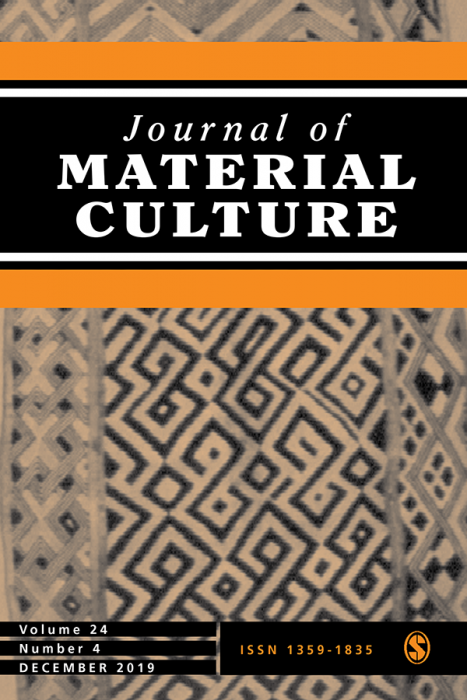
Observed Decay: Telling Stories With Mutable Things (2006)Caitlin DeSilvey
DeSilvey’s paper advances a sophisticated and daring proposal for new ‘interpretive approaches’ to the past and its material remnants (DeSilvey 2006: 335). These approaches – variously described by the author as ‘observed decay’, ‘ephemeral commemoration’, ‘collaborative curation’, ‘cultural remembrance’ or ‘synchronic handiwork’ – take their cue from processes of natural decay and establish a link between the human and the non- human, between technology and the environment; they value transition over stillness, ambiguity over fixed states.
They are themselves the result of ‘a moment of ambiguous perception’ (2006: 323). As she explains at the beginning of her paper, DeSilvey had spent a number of years visiting a ‘derelict homestead’ in a rural area of Montana (USA), where she would ‘[poke] about in a scrambled deposit of domestic and agricultural rubble’ (2006: 318). Abandoned farming equipment as well as torn-up books and maps were scattered all around the farm, among many other discarded objects. Most of them had been visibly reclaimed by wildlife; the roots of one tree had twined around an old tool for gathering grain, and mice had consistently nibbled at the books and the maps.
Seeing and manipulating the latter inspires DeSilvey with a seemingly contradictory observation:
The curator in me said I should just … display [the books] to the public as a damaged but interesting record of obsolete knowledge. Another instinct told me to leave the mice to their own devices … I could understand the mess as the residue of a system of human memory storage, or I could see an impressive display of animal adaptation to available resources. (2006: 323).
As residue, the books are an artefact, i.e. ’a relic of human manipulation of the material world’; as the evidence of non-human intervention upon human-made utensils, they are an ecofact, that is to say ‘a relic of other-than-human engagements with matter, climate, weather and biology’ (2006: 323). This duality, according to DeSilvey, is connected to contemporary reworkings of the notion of identity, now focusing on process rather than stability (2006: 323).
But it also comes into direct conflict with well-established curation practices, as hinted at above. A number of question immediately arise. Why should the agents of decay be left to their own devices and the whole process ‘observed’ rather than ‘arrested’? (2006: 326). What knowledge is to be gained from allowing such processes of decay to continue uninterrupted? And how is this new approach to be implemented, with no end in sight for the decaying artifacts but transformation and disappearance?
As to the reasons why, DeSilvey begins by summarizing the established approach to the past as encapsulated in certain objects:
In conventional terms, in order for the object to function as a bearer of cultural memory it must be held in perpetuity in a state of protected stasis. Acts of counting, sorting, stacking, storing and inventory convert things from the category of ‘stuff’ to the status of museum object (2006: 323).
Protection, however, does not seem to be an entirely neutral process:
Strategies to arrest decay always destroy some cultural traces, even as they preserve others. And decay itself may clear a path for certain kinds of remembrance despite its (because of its?) destructive energies (2006: 323).
Preservation and destruction are thus not mutually exclusive strategies but intertwining phenomena, both of them generating specific ‘social effects’ that are equally worth considering (2006: 324).
The effects that the observed decay approach may generate – and thereby justify is adoption – are several. It may help appreciate how objects belong into what DeSilvey, following Edward Casey, describes as ‘matrices of memory’, in which ‘remembering goes on … in things and places as well as among human beings’ (Casey 2000: 311). Likewise, It may help with highlighting the shifty presence of the past in contemporaneity:
An artefact of technological innovation sinks into the dark loam under the box elder trees and recalls its origins in veins of ore under the dark earth. The ruined machine sparks reflections on once robust economies, the changing markets and agricultural consolidations that precipitated the transformation of the western landscape (2006: 324).
But quietly observing the decay of past objects would not be without its (practical) problems. DeSilvey acknowledges as much when she states that ‘most recognized historic sites’ would not admit such a practice, which might be more suited to ‘materials that lie at the fringes of conservation practice’ (2006: 335).Even so, accepting that human-made, socially constructed artefacts may be ‘bound into continual cycles of articulation and disarticulation’ (2006: 335) radically alters accepted ways of interaction with objects (including the way they are cared for) and offers a possibility for ‘practicing [an] ethically grounded mode of being in the world’ (Saito 2022: 164).
Antonio Fornet Vivancos
Universidad Politécnica de Cartagena
DeSilvey, C. Observed Decay: Telling Stories With Mutable Things. (2006). Journal of
Material Culture Vol. 11(3): 318–338.
